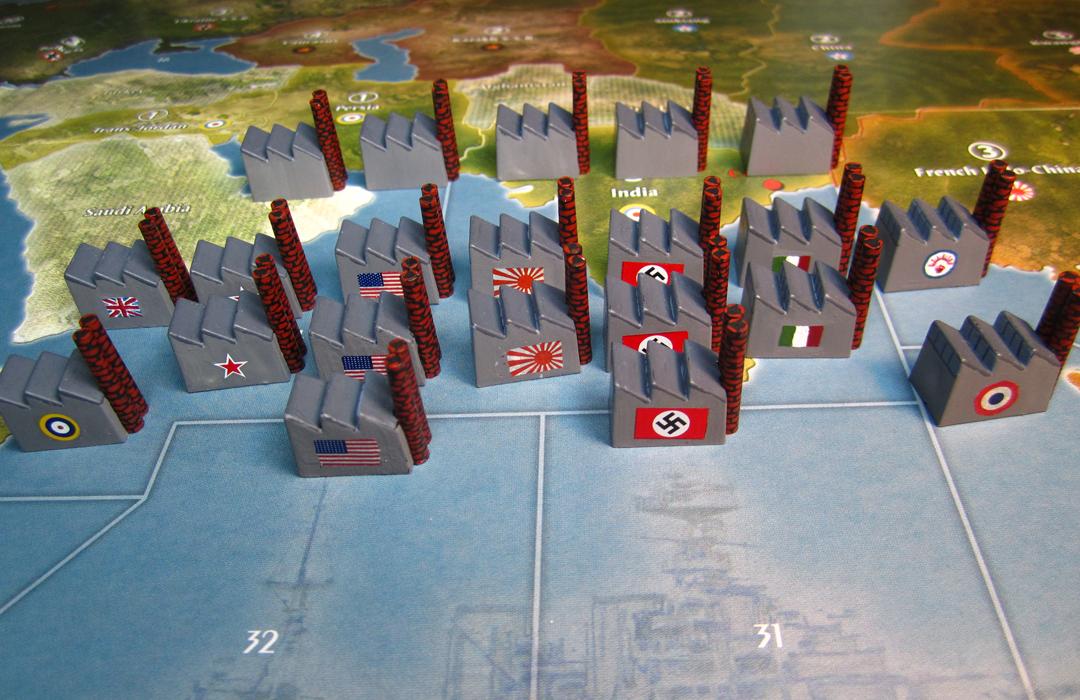I find it’s really fun to disagree with Allweneed, so here goes:
Seriously though, I agree with all your points which I did not quote.
@allweneedislove:
4. better pricing of units. reducing the cost of naval and air units has led to a greater variety of units being purchased.
This was the hallmark of AA50, not G40.
6. strategic bombing raids are a legitimate but not overpowering strategy. how complexes are damaged and repaired is excellent. there is now a bigger reward for bombing but still plenty of risk, and the defender can have a counter strategy by having interceptors.
Main point is true (due to +2 Strat bombers with 2nd edition), but AA50 included escort/interceptor rules and max damage was double the value of the territory, which was adequate. So strat bombing raids were legitimate but not overpowering in AA50 as well.
9. national objectives add mini in game objectives that add strategy and can encourage play to areas of the map that otherwise would be ignored.
Again, AA50 pioneered this. G40 continued it, and actually some of the national objectives suck. Bad. But AA50 NO’s were all pretty solid.
10. transports taken last as casualties now has more naval units being purchased and a greater variety in those purchases. earlier editions had the allies creating a super navy that was unsinkable. once this point was achieved the allies would rightfully stop building navy. the navies had a few loaded carriers defended by huge amounts of transports. now, how navies are built and deployed, involves many more decisions. there is much more naval action with many fleets being sunk.
This is kudos to AA50. Just continued on to G40.
11. politics and declarations of war(dow). depending on which round japan issues a dow, the game plays out very differently. there are benefits, different strategies, and different tactics for each different round that japan declares war. there is great game design in each round of dow having equal opportunity for victory.
Yes, although P40 really sucked (at least until the latest revisions) on this aspect. J1 was the no-brainer decision. EVERY TIME.
13. global 1942 scenario. the game has a whole new set of strategies to explore with the alternate start. http://smo63.fatcow.com/pdf/G42setup2013424.pdf
OK, but this could be done with any A&A game so is not unique to G40
14. most importantly the victory conditions as it drives all choices from purchases, to attacks to movements. the axis having 2 separate victory conditions adds many layers to the game.
Yes, but 6 VC’s in the Pacific when 4 of them are gimmes and 3 of the others are not that major and the Axis can win without taking a major world capital/power center and no matter how badly things are going in Europe SUCKS
all older games were won by economics and the axis had to overtake the allies(most easily achieved by taking moscow). although they had victory cities it was for a world total and to reach this total you had to being winning economically, so while it might seem that players were making a push for victory cities we were all actually just playing for an economic victory. in older editions after the either side reached their victory city conditions you could keep playing to total domination and the same side would win. the axis still have an option to go for an economic victory but it is not a necessity.
Not exactly true. The original had “economic win” for Axis which was like 84 IPC’s. But achieving this level would not necessarily mean the Axis would always win if the game continued - it provided an alternate way for the Axis to win without necessarily being able to take over the world. And that was one of the oldest versions of the game.
Again, I prefer a game where you are vying for the ability to dominate the world, compared to this G40 rule that no matter how badly Germany and Italy collapse and no matter how quickly, if Japan can sneak in and take Hawaii or Sydney after taking India and hold for just one round, the Axis are victorious. That’s complete crap.
Out of time - have not read the rest of the OP yet












